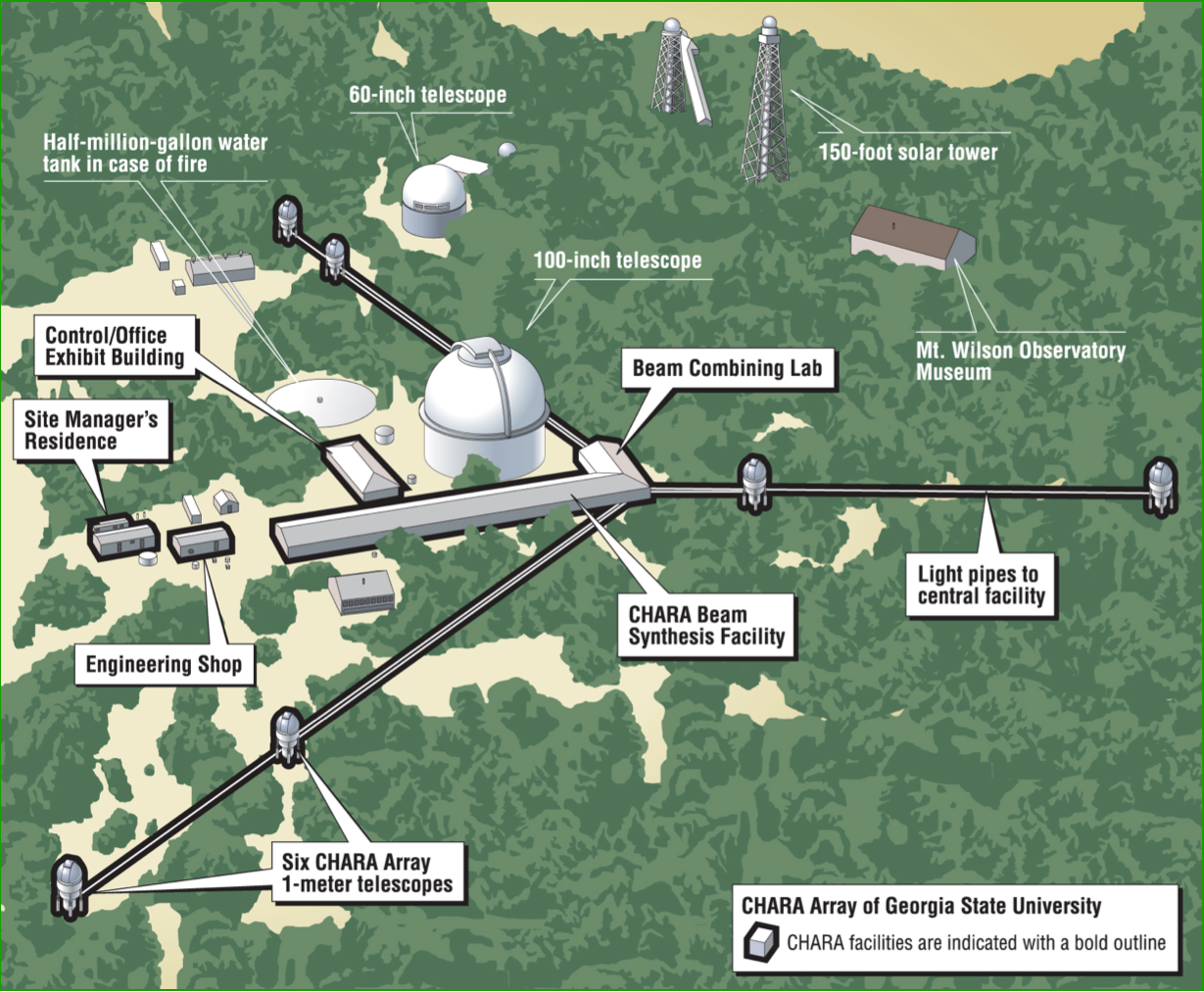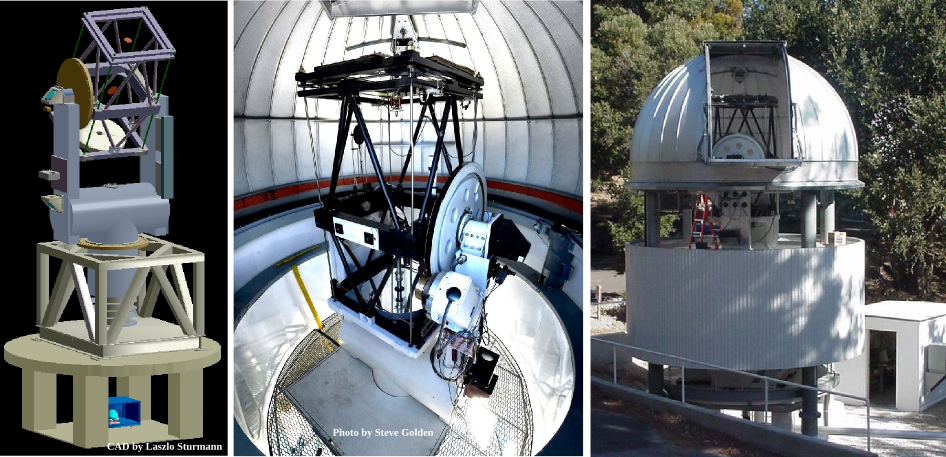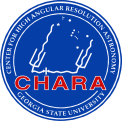The CHARA Array is an optical / near-infrared interferometer located on Mount Wilson, CA. The facility is composed of six 1-meter telescopes, a beam synthesis facility, and a beam combination laboratory. Using the longest 331 meter baselines CHARA can resolve objects as small as 0.2 milliarcseconds (mas) at visible wavelengths and 0.5 mas in the near-infrared. A table summarizing the instrument availability, capabilities, and sensitivities is available on the Applying for Observing Time page.
Overview and Optical Layout

The six CHARA telescopes are arranged in a Y-shape configuration providing 15 baselines ranging from 34 - 331 meters in length and up to 10 possible closure phase triangles. Light from each telescope is transported through vacuum tubes into a central beam synthesis facility. Inside the lab, each light beam travels through optical path length delay lines to equalize the distance that the light from each telescope travels. From there, the light beams are sent to a beam combiner where interference fringes are recorded.
For further discussion of the facility, please see the publication First Results from the CHARA Array. II. A Description of the Instrument (pdf).
Telescopes
Each of the six telescopes is a 1 m Mersenne-type afocal beam reducer that injects a 12.5 cm output beam into the vacuum transport tubes. The telescopes are enclosed in 16.5 ft domes which open up for optimal airflow (see below).

Baselines and configurations
The six CHARA telescopes provide 15 baselines ranging from 34 - 331 m in length:
| Baseline | Length (m) | Position Angle (deg) |
| E1-S1 | 330.66 | 22.28 |
| W1-E1 | 313.53 | 253.39 |
| E1-S2 | 302.33 | 25.70 |
| E2-S1 | 278.76 | 14.63 |
| W1-S1 | 278.50 | 321.02 |
| W1-E2 | 251.34 | 257.73 |
| W1-S2 | 249.39 | 317.18 |
| E2-S2 | 248.13 | 17.87 |
| W2-E1 | 221.82 | 241.27 |
| W2-S1 | 210.97 | 340.88 |
| W2-S2 | 177.45 | 339.08 |
| W2-E2 | 156.27 | 243.23 |
| W2-W1 | 107.92 | 99.11 |
| E2-E1 | 65.88 | 236.60 |
| S2-S1 | 34.07 | 350.29 |
A two telescope combiner can be used with any two telescopes (one baseline), a 3-telescope combiner with any 3 telescopes (3 baselines), etc. The selection of telescopes can be changed during the night, within some limitations, provided it is part of the observing request and plan - please inquire for more specific information.
Sensitivity Limits
A table of limiting magnitudes is available on the Applying for Time page. All targets must satisfy all requirements for acquisition, tip/tilt tracking, and beam combiner limiting magnitudes. Presently the array does not have any offset tracking capabilities.



